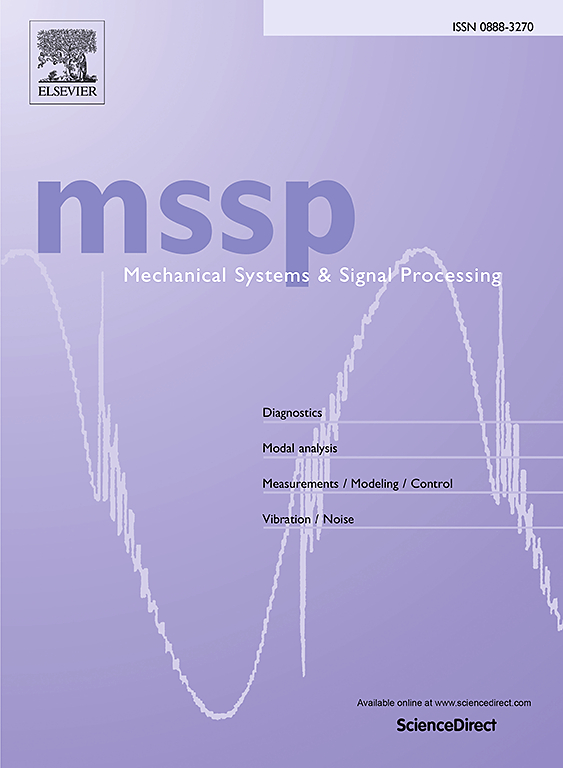Identification of non-conforming temporal patterns in mixed shock and vibration data with the Information Impulse Function
IF 7.9
1区 工程技术
Q1 ENGINEERING, MECHANICAL
引用次数: 0
Abstract
The Information Impulse Function (IIF) is an analysis technique that operates on time–frequency representations of a signal to detect non-conforming, transient patterns. Transient patterns can signify events of scientific and engineering interest but may be difficult to confidently identify against non-Gaussian backgrounds. IIF analysis highlights non-conforming patterns and diminishes conforming patterns, providing a high confidence discriminator between potential events of interest and the background. This is accomplished by first calculating the relative participation of the temporal principal shape vectors as a function of signal compression. The integral of the resulting surface represents both signal complexity and uniqueness per instance in time. To demonstrate the IIF operator, acceleration response data was collected on a complex aluminum structure excited by stationary random vibration while simultaneously impacted by three different modal hammers. The force output of each hammer was recorded to corroborate the impacts in time with IIF results. Detection efficacy of the IIF is benchmarked using the scale-averaged wavelet power and the local Hölder exponent representing changes in signal energy and continuity, respectively. Results show that IIF analysis is highly effective at detecting impacts. General behavior of the IIF is discussed with specific examples.
用信息脉冲函数识别混合冲击和振动数据中的不一致时间模式
信息脉冲函数(IIF)是一种分析技术,它对信号的时频表示进行操作,以检测不符合的瞬态模式。瞬态模式可以表示科学和工程感兴趣的事件,但可能难以在非高斯背景下自信地识别。IIF分析突出非一致性模式并减少一致性模式,在潜在感兴趣的事件和背景之间提供高置信度的鉴别器。这是通过首先计算作为信号压缩函数的时间主形状矢量的相对参与来完成的。所得曲面的积分既表示信号的复杂度,又表示每个实例在时间上的唯一性。为了验证IIF算子的有效性,采集了一个复杂铝结构在固定随机振动下同时受到三种不同模态锤击的加速度响应数据。记录每个锤的力输出,以便与IIF结果及时证实冲击。IIF的检测效率分别使用尺度平均小波功率和代表信号能量和连续性变化的局部Hölder指数进行基准测试。结果表明,IIF分析在检测冲击方面非常有效。通过具体实例讨论了IIF的一般行为。
本文章由计算机程序翻译,如有差异,请以英文原文为准。
求助全文
约1分钟内获得全文
求助全文
来源期刊

Mechanical Systems and Signal Processing
工程技术-工程:机械
CiteScore
14.80
自引率
13.10%
发文量
1183
审稿时长
5.4 months
期刊介绍:
Journal Name: Mechanical Systems and Signal Processing (MSSP)
Interdisciplinary Focus:
Mechanical, Aerospace, and Civil Engineering
Purpose:Reporting scientific advancements of the highest quality
Arising from new techniques in sensing, instrumentation, signal processing, modelling, and control of dynamic systems
 求助内容:
求助内容: 应助结果提醒方式:
应助结果提醒方式:


